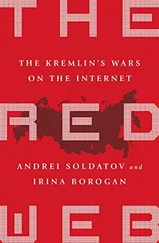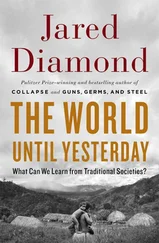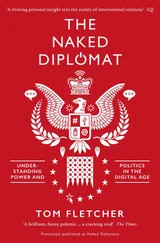Jared Cohen - The New Digital Age
Здесь есть возможность читать онлайн «Jared Cohen - The New Digital Age» весь текст электронной книги совершенно бесплатно (целиком полную версию без сокращений). В некоторых случаях можно слушать аудио, скачать через торрент в формате fb2 и присутствует краткое содержание. Жанр: Старинная литература, на английском языке. Описание произведения, (предисловие) а так же отзывы посетителей доступны на портале библиотеки ЛибКат.
- Название:The New Digital Age
- Автор:
- Жанр:
- Год:неизвестен
- ISBN:нет данных
- Рейтинг книги:5 / 5. Голосов: 1
-
Избранное:Добавить в избранное
- Отзывы:
-
Ваша оценка:
- 100
- 1
- 2
- 3
- 4
- 5
The New Digital Age: краткое содержание, описание и аннотация
Предлагаем к чтению аннотацию, описание, краткое содержание или предисловие (зависит от того, что написал сам автор книги «The New Digital Age»). Если вы не нашли необходимую информацию о книге — напишите в комментариях, мы постараемся отыскать её.
The New Digital Age — читать онлайн бесплатно полную книгу (весь текст) целиком
Ниже представлен текст книги, разбитый по страницам. Система сохранения места последней прочитанной страницы, позволяет с удобством читать онлайн бесплатно книгу «The New Digital Age», без необходимости каждый раз заново искать на чём Вы остановились. Поставьте закладку, и сможете в любой момент перейти на страницу, на которой закончили чтение.
Интервал:
Закладка:
This trend could be manifested in future truth-and-reconciliation committees, or in temporary judicial structures after a major conflict. After the Rwandan genocide, the country’s new government rejected the South African truth-and-reconciliation model, arguing that reconciliation would take place only when the guilty were punished. But the formal judicial system took too long to process alleged genocidaires; more than a hundred thousand Rwandans sat in jail for several years waiting for their time in court. So a new system of local courts was built, taking inspiration from a grassroots, community-based conflict-resolution process known as “gacaca . ” Under gacaca tribunals, the accused were confronted by the community and offered a commuted sentence if they confessed their crimes, shed light on what happened or identified the remains of those they killed. Despite being based in village justice, the gacaca tribunal system was a complex structure, involving different phases for judgment. The first phase was referred to as the cell level; in it the accused were brought before a tribunal of people in the community where the crime was committed. This tribunal determined the severity of the crime—whether the accused should be tried at the sector, district or province level, all three of which deal with appeals. The gacaca system was far from perfect. It came with the full panoply of traditional cultural prejudices, including the exclusion of women as judges and a failure to prosecute crimes committed against women with the same ferocity as those against men. These caveats aside, justice was fast, and the participating community generally felt satisfied with the process. Subsequent postcrisis governments elsewhere in the world have looked at adopting this model given how effective it was at advancing numerous reconciliation goals.
Whether citizens in the future choose to take their digital evidence to The Hague or to local judicial bodies, they will certainly have more opportunities to participate in the transitional justice-and-reconciliation process. They can instantly upload documents, photos and other evidence from a conflict or a former repressive regime to an international cloud-based data bank that will categorize and add the information to the relevant open files, to be used later by courts, journalists and others. Participatory memorials and inclusive feedback loops that allow populations to express their grievances in an organized manner—perhaps communities will use algorithmic argument mapping to aggregate the most prescriptive feedback—will help retain the confidence of groups that, once a conflict is over, might begin to feel neglected. Citizens will be able to watch the justice process unfold in real time, with live-streaming trials of major figures halfway across the world available on their phones, and a wealth of information about each stage of the process at their fingertips. Documenting the crimes (both physical and virtual) of a fallen regime serves a broader purpose beyond prosecution: Once every dirty secret of the former state is published online, no future government will be able to do quite the same things. Political observers always worry about a post-conflict state’s slide back into autocracy and watch keenly for signs of such a return; the full exposure of the former regime’s wrongdoings—how exactly it brutalized dissidents, how it spied on citizens’ online activities, how it hid money out of the country—will help forestall such possibilities.
Among all of the topics we’ve covered, the future of reconstruction is perhaps where the greatest share of optimism belongs. Little can be more devastating to a country and a population than natural disaster or war, or both, and yet we see a clear trend of postcrisis transitions occurring in shorter time periods with more satisfactory results. Unlike many avenues in geopolitics, the world does learn from each reconstruction example what works, what doesn’t and what can be improved upon. Clever applications of communications technology and widespread connectivity will accelerate rebuilding, inform and empower the people, and help forge a better, stronger and more resilient society. All it takes is a bit of creativity, plenty of bandwidth and the will to innovate.
1These difficulties were compounded by the fact that the United States set up operational headquarters in Saddam Hussein’s former palaces, which had been turned into electronically shielded bunkers by the paranoid dictator.
2We take these duties from a list of the ten functions of the state in the book Fixing Failed States, by Clare Lockhart and Ashraf Ghani, the founders of the Institute for State Effectiveness.
3The journalist Naomi Klein famously called these actors “disaster capitalists” in her provocative book The Shock Doctrine . Klein argues that neo-liberal economics advocates seek to exploit a postcrisis environment to impose free-market ideals, usually to the detriment of the existing economic order. Like psychological shock therapy, this free-market fundamentalism uses the appearance of a “blank slate” to violently reshape the economic environment.
4Estimates on the death toll of the Haitian earthquake vary widely. The Haitian government believes 316,000 people were killed, while a leaked memo from the U.S. government put the figure somewhere between 46,190 and 84,961.
Conclusion
As we look into the future—its promises and its challenges—we are facing a brave new world, the most fast-paced and exciting period in human history. We’ll experience more change at a quicker rate than any previous generation, and this change, driven in part by the devices in our own hands, will be more personal and participatory than we can even imagine.
In 1999, the futurist Ray Kurzweil proposed a new “Law of Accelerating Returns” in his seminal book The Age of Spiritual Machines: When Computers Exceed Human Intelligence . “Technology,” he wrote, “is the continuation of evolution by other means, and is itself an evolutionary process.” Evolution builds on its own increasing order, leading to exponential growth and accelerated returns over time. Computation, the backbone of every technology we see today, behaves in much the same way. Even with its eventual inevitable limitations, Moore’s Law promises us infinitesimally small processors in just a matter of years. Every two days we create as much digital content as we did from the dawn of civilization until 2003—that’s about five exabytes of information, with only two billion people out of a possible seven billion online. How many new ideas, new perspectives and new creations will truly global technological inclusion produce, and how much more quickly will their impact be felt? The arrival of more people in the virtual world is good for them, and it’s good for us. The collective benefit of sharing human knowledge and creativity grows at an exponential rate.
In the future, information technology will be everywhere, like electricity. It will be a given, so fully a part of our lives that we will struggle to describe life before it to our children. As connectivity ushers billions more people into the technological fold, we know that technology will soon be intertwined with every challenge in the world. States, citizens and companies will make it part of every solution.
Attempts to contain the spread of connectivity or curtail people’s access will always fail over a long enough period of time—information, like water, will always find a way through. States, citizens, companies, NGOs, consultants, terrorists, engineers, politicians and hackers will all try to adapt to this change and manage its aftereffects, but none will be able to control it.
Читать дальшеИнтервал:
Закладка:
Похожие книги на «The New Digital Age»
Представляем Вашему вниманию похожие книги на «The New Digital Age» списком для выбора. Мы отобрали схожую по названию и смыслу литературу в надежде предоставить читателям больше вариантов отыскать новые, интересные, ещё непрочитанные произведения.
Обсуждение, отзывы о книге «The New Digital Age» и просто собственные мнения читателей. Оставьте ваши комментарии, напишите, что Вы думаете о произведении, его смысле или главных героях. Укажите что конкретно понравилось, а что нет, и почему Вы так считаете.












